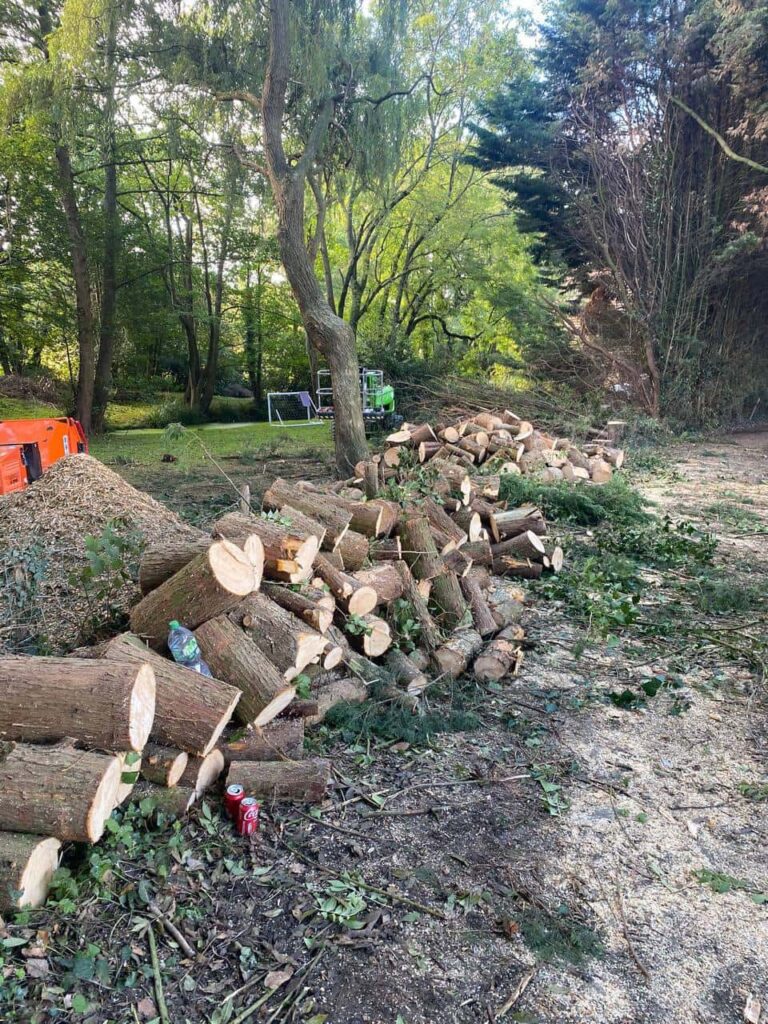6 Situations Where Crown Reduction Is the Best Option
Introduction
Trees are a vital part of any landscape, offering shade, character, and structure. But as they mature, they can sometimes outgrow their space or pose a risk to surrounding property. In these cases, crown reduction can be a smart and effective solution. Rather than removing a tree entirely, crown reduction involves carefully trimming back branches to reduce the overall height and spread, while maintaining its natural shape and health.
At Radcliffe on Trent Tree Surgeons, we regularly carry out crown reductions across Nottingham for homeowners, businesses, and landowners looking to manage trees without compromising their long-term vitality. In this article, we’ll cover six scenarios where crown reduction is not only appropriate—but the best option available.
Key Takeaways
- Crown reduction manages tree size without removing it
- Ideal for safety, light access, and structural balance
- Supports tree health while reducing risk
- Maintains the natural shape of the tree
- Recommended when full removal is unnecessary or undesirable
1. When a Tree Has Outgrown Its Space
Over time, trees can outgrow the area they were originally planted in. Whether it’s a small urban garden or a tight roadside verge, a tree that becomes too large can dominate the space, obstruct views, or encroach on neighbouring properties.
Crown reduction allows you to scale back the size of the tree sympathetically, creating more space and reducing the visual bulk, all while keeping the tree healthy and structurally sound.
Why it works:
- Reduces overbearing canopy
- Prevents interference with boundaries
- Keeps mature trees manageable in small gardens
2. To Prevent Interference with Buildings or Utilities
A common reason for crown reduction is when branches begin to encroach on buildings, roofs, chimneys, aerials, or utility lines. This can lead to physical damage, blocked gutters, or even fire hazards if branches are too close to overhead cables.
By selectively reducing the crown, you can reclaim space around structures without resorting to full tree removal. It’s a targeted solution that reduces the risk of costly property damage.
Benefits in built environments:
- Prevents branches touching or damaging structures
- Minimises need for reactive maintenance
- Maintains airflow and clearance near buildings
3. When a Tree Becomes Unbalanced or Structurally Unsafe
A tree can become lopsided due to weather damage, uneven growth, or poor pruning in the past. This structural imbalance can lead to increased wind resistance, raising the chance of limb failure or full collapse during storms.
Crown reduction helps by evening out the canopy, redistributing weight, and reducing wind sail. It’s a proactive measure that improves both safety and long-term stability.
Structural advantages:
- Reduces risk of toppling in high winds
- Improves the balance and weight distribution
- Makes trees safer in exposed locations
4. To Improve Light Levels in Shaded Areas
While trees are excellent for providing shade, they can sometimes block too much light from gardens, homes, or nearby plants. Overgrown canopies can cast deep shadows that make gardens feel closed-in or inhibit the growth of lawns and beds below.
Crown reduction allows you to thin and lift the canopy, letting in more natural light while still preserving the tree’s form. It’s especially useful in small gardens or where windows are heavily shaded.
Light-enhancing effects:
- Increases sunlight in gardens and through windows
- Helps underplanting and lawns thrive
- Creates a more open, airy atmosphere
5. Following Storm Damage or Limb Breakage
Trees that suffer storm damage can develop weak points, broken branches, or imbalanced crowns. In these cases, a full removal may not be necessary—but targeted crown reduction can remove damaged sections and reshape the tree to restore safety and symmetry.
It’s an ideal solution for preserving a valued tree while reducing the risk of future damage or failure.
Post-damage improvements:
- Removes dangerous or hanging limbs
- Restores the tree’s shape and health
- Prevents uneven regrowth or strain
6. When Full Removal Isn’t Desirable
In many cases, the tree in question may be part of the garden’s character, provide privacy, or even hold sentimental value. If safety or size is a concern, but removal feels like an extreme step, crown reduction provides a middle ground.
It allows you to keep the tree, extend its lifespan, and maintain its role in the landscape—while managing its size and impact on the surrounding space.
Ideal for:
- Preserving important garden features
- Avoiding unnecessary removal
- Managing mature trees over time
Conclusion
Crown reduction is a practical and responsible way to manage mature trees without resorting to complete removal. Whether it’s for safety, aesthetics, or space management, this technique allows you to retain the benefits of trees while minimising the challenges they can present.
At Radcliffe on Trent Tree Surgeons, we provide expert crown reduction services across Nottingham, helping homeowners and landowners take care of their trees in a way that’s sustainable and effective. If you’ve got a tree that’s becoming too much, get in touch with our team today. We’ll help you find the right solution—while keeping your landscape looking its best.
Call us on: 0115 647 1195
Click here to find out more about Radcliffe on Trent Tree Surgeons
Click here to complete our contact form and see how we can help with your tree needs.

